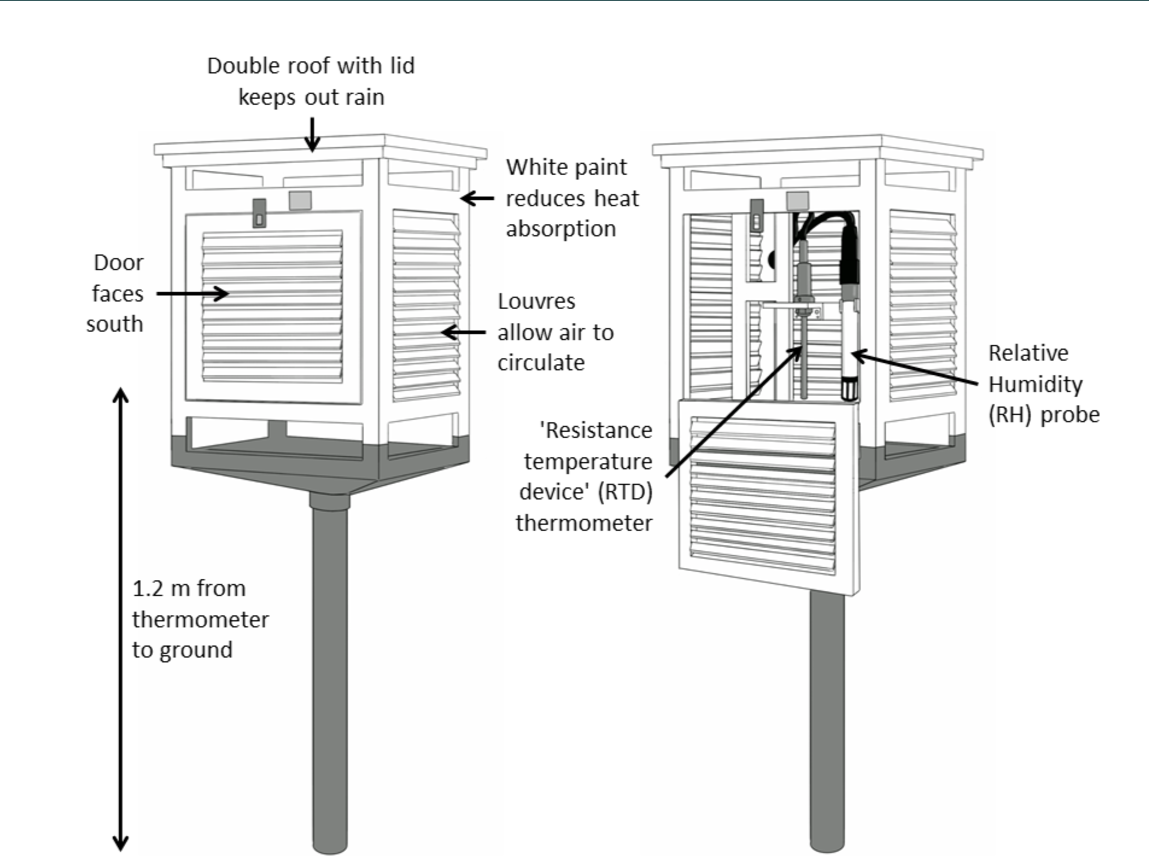
As you may know, an aspect of the Birmingham Urban Observatory has been the distribution of 100 citizen weather stations produced by a company named Netatmo. Using citizen weather stations allows us to collect high density meteorological data at a much lower cost than using standard professional weather stations. Although they may offer less accuracy than professional kit, the high spatial coverage we can achieve by using them allows us to see differences in weather across far more areas of a city, better capturing phenomenon such as the Urban Heat Island.
The Netatmo weather station consists of an indoor module, an outdoor module, an anemometer and a rain gauge. From these we can gather data for a number of features such as temperature, humidity, barometric pressure, wind speed and direction and precipitation rate.
There is one slight problem with this equipment. The outdoor module, if situated in the sun, can produce inaccurate readings as it is heated up by the incoming solar radiation rather than simply measuring the ambient air temperature. Netatmo are aware of this pitfall and do suggest that the outdoor module is situated out of direct sunlight throughout the day. However, with limited space in citizen’s gardens, and with many weather enthusiasts being unaware of the issue, this can often be difficult to achieve.
To counteract this overheating, we at Birmingham Urban Observatory use a custom made radiation shield to mimic a Stevenson screen. A Stevenson screen is the standard used within meteorological recording to house equipment sheltering it from direct radiation (sunlight), amongst other influences, whilst still allowing for air to pass through and circulate. Being white in colour and therefore having a high albedo (reflective property) also means that sunlight is reflected away from the instrumentation inside. Our custom made radiation shields act in a similar way, albeit they are much smaller as they are used just to house the Netatmo outdoor module.
The benefits of our radiation shields can be seen with the current sensors situated across Birmingham. Here we demonstrate an example of this.
On Friday 17th we had a slight peak in temperatures as a warm front had passed over and we were situated within the warm sector of a low pressure system. We also has largely clear skies with lots of incoming solar radiation, something which as mentioned, can lead to inaccurate recordings if the unshielded Netatmo stations are located in direct sunlight.
During this period there appeared to be large discrepancies between the Netatmo weather stations regarding the temperature across Birmingham. This led to a range from 20°C all the way up to the low 30’s.
When clicking on the different temperatures it was apparent that the lower temperatures were being recorded by the Netatmo Gatekeepers – the modules we distributed with the radiation shields – whilst the higher temperatures were being recorded by the Public Netatmo – the modules members of the public have installed themselves without a radiation shield.
Our Elms cottage campus Meteorological station recorded a maximum temperature of 24.12°C on Friday 17th – indicating that the measurements recorded by Public Netatmo modules in the high 20’s to low 30’s were most likely inaccurate readings
Our custom made radiation shields may not be pretty or perfect, but they allow for improved readings from our citizen weather stations.
Next time we have a clear, hot, sunny day why don’t you see if you are able to spot our Netatmo Gatekeeper weather stations on the Birmingham Urban Observatory data map?
If you want more information on the use of radiation shields and Netatmo citizen weather stations then check out the following papers: